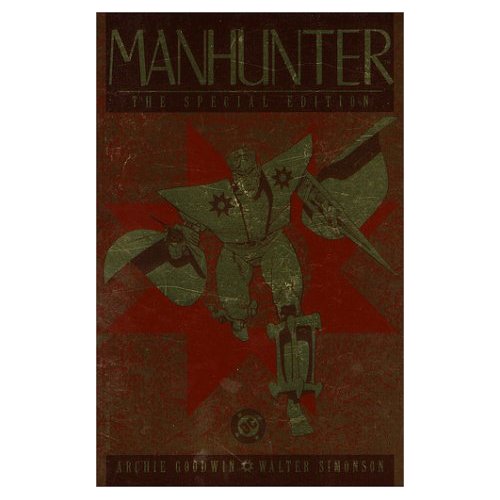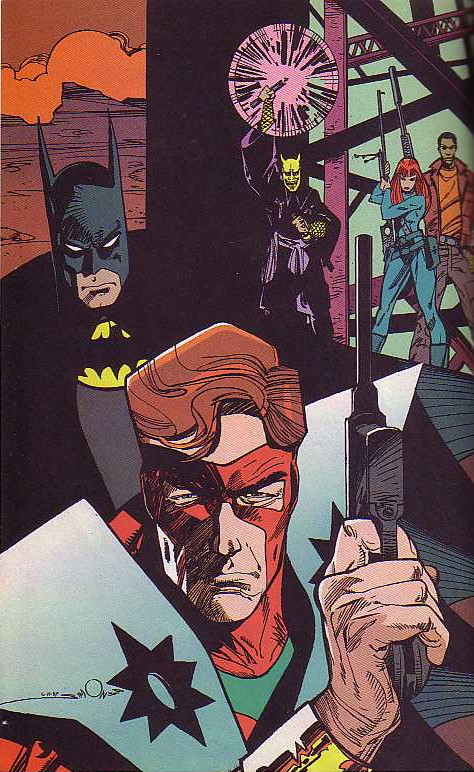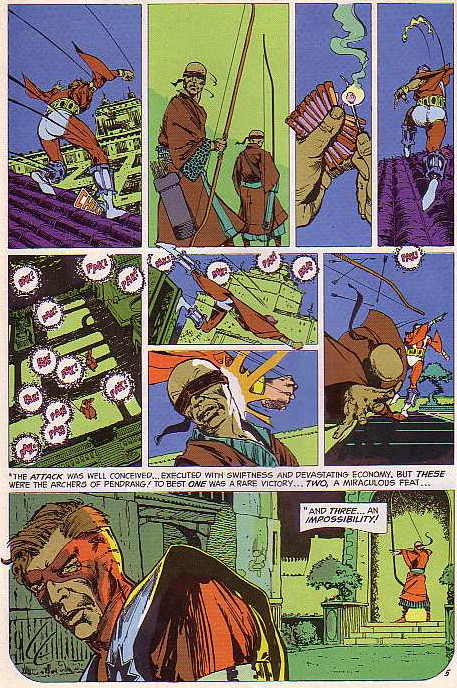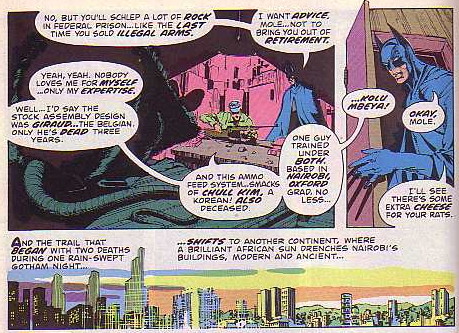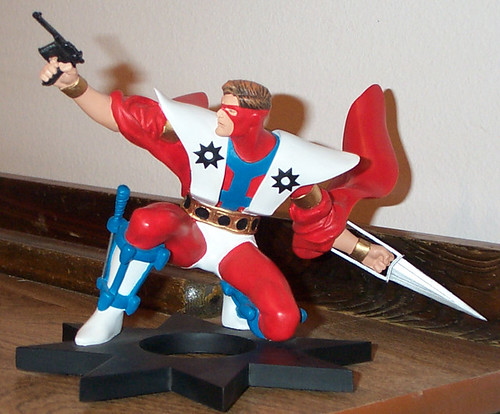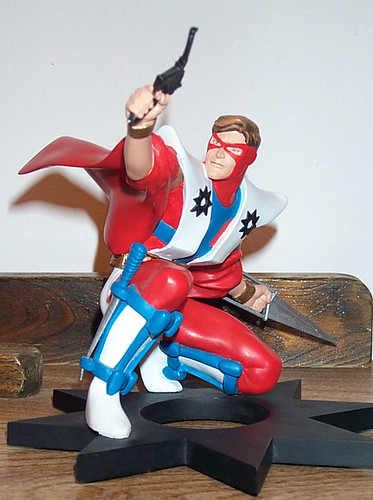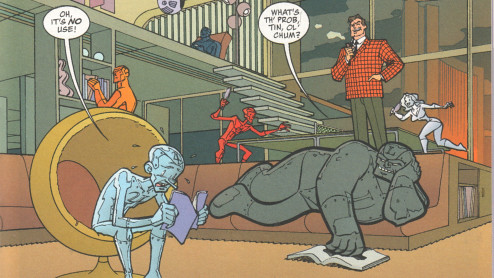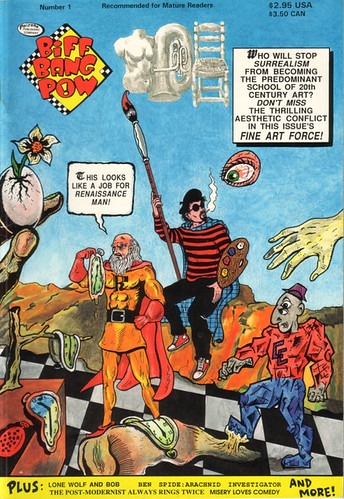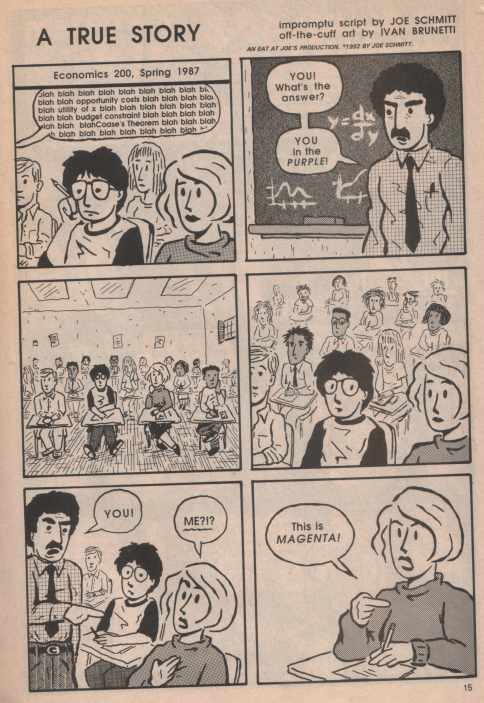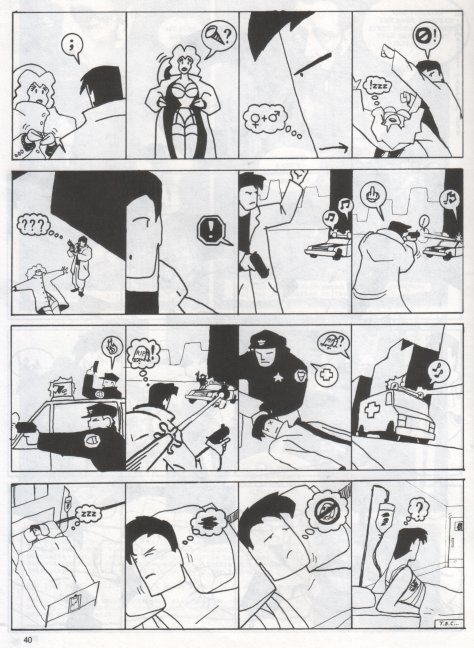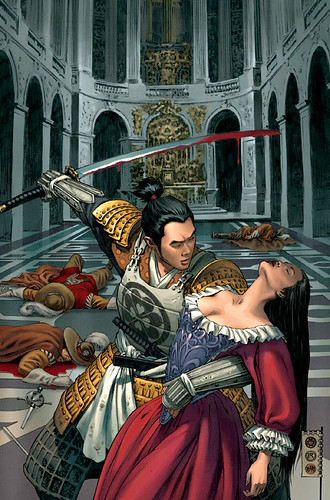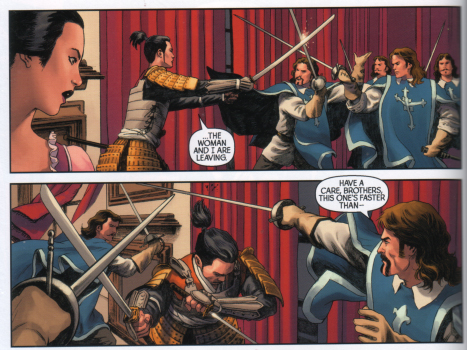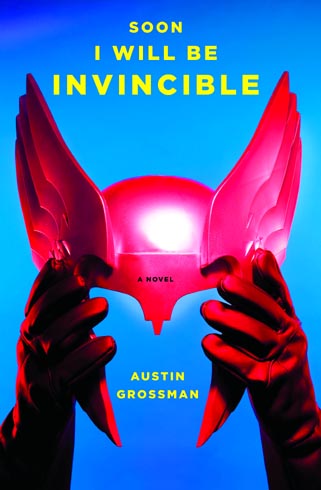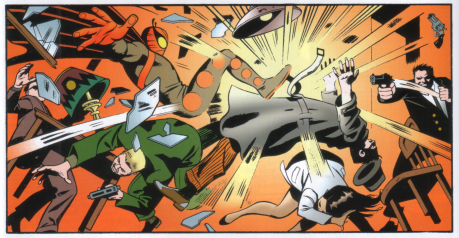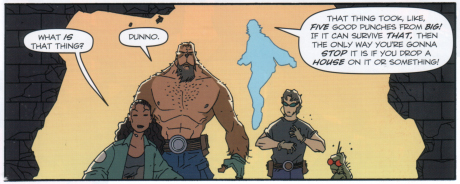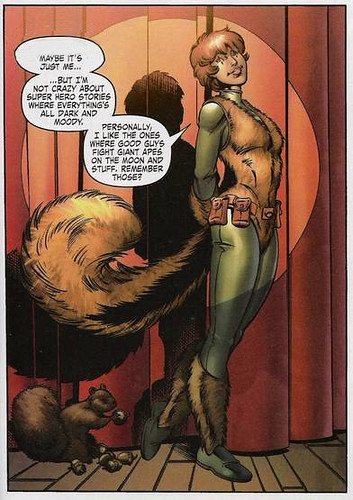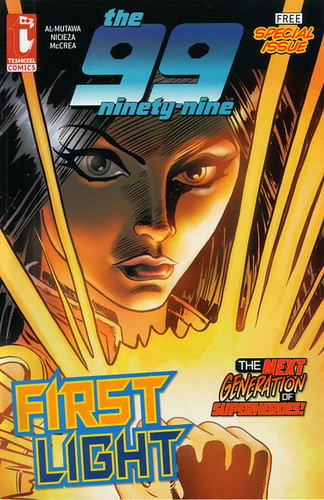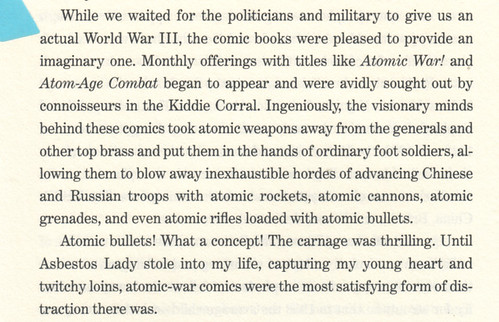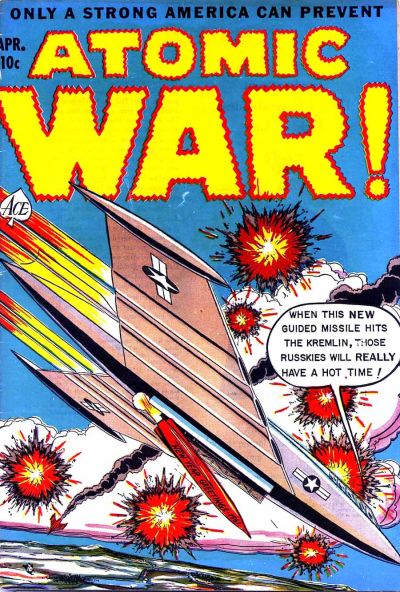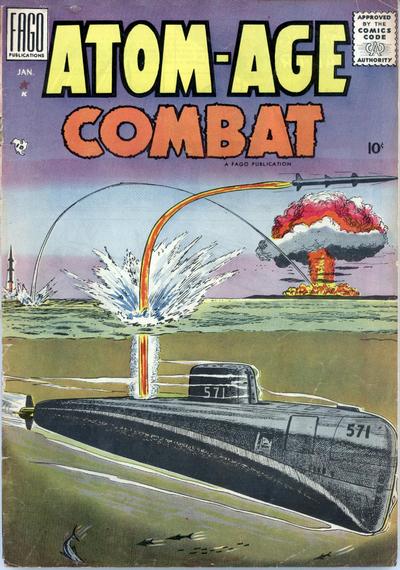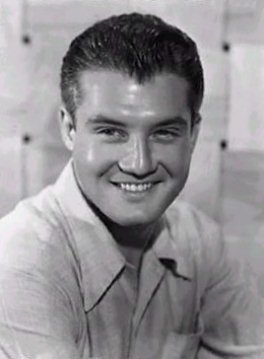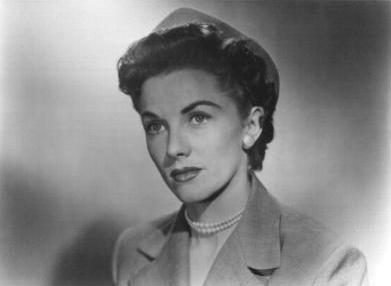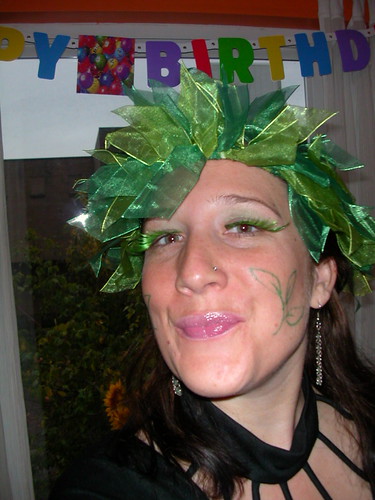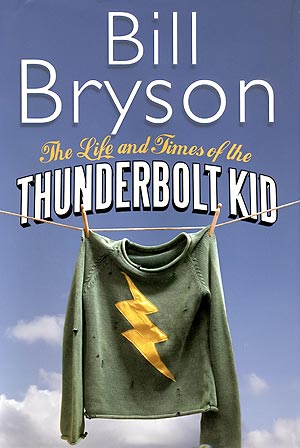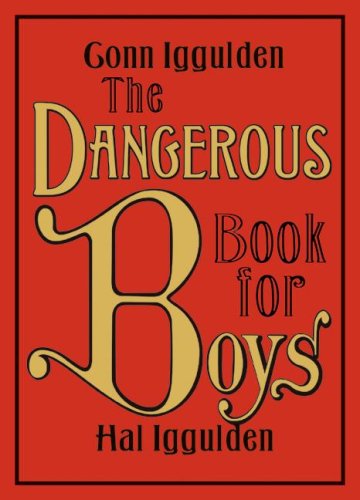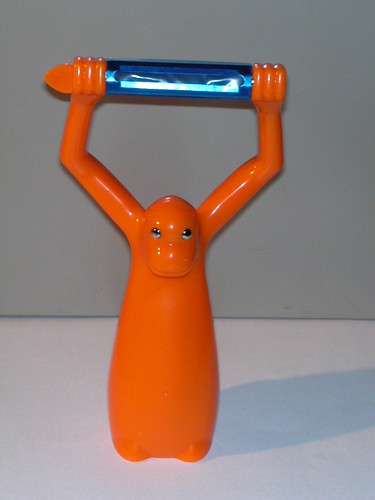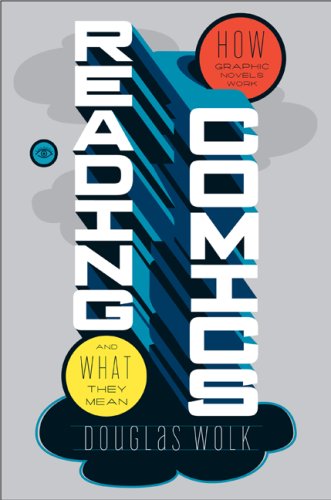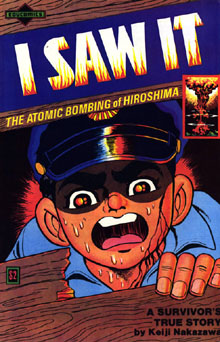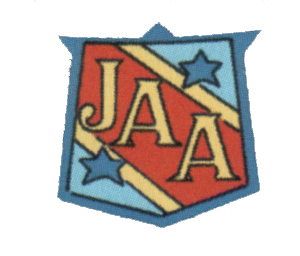It's no secret that I am a big fan of alternate histories, whether in prose or in comics. The what-might-have-beens - of history and fiction - are as compelling to me as the facts or the canon; I guess I like how they illuminate the essential or important elements of the original by showing them in a different light, or maybe I just enjoy seeing a twist on an established concept.
In any case, it was the appeal of alternaty that made me partial to DC's parallel Earths construct and sorry to see it go in the wake of
Crisis on Infinite Earths over twenty years ago. The latest mega-event but one,
52, seems to have brought the multiverse back; I wonder if the imaginative fun of numbered and lettered Earths will also return, or if we will just see a host of different backdrops for the same overwrought and convoluted storytelling.
I had the good fortune the other day to pick up a comic which met my alternate-world jones in a direct and old-school way:
 Legends of the DCU:
Legends of the DCU:
Crisis on Infinite Earths #1
DC Comics: 1999
Writer: Marv Wolfman;
Penciller: Paul Ryan; Inker: Bob McLeod was one of those showcase titles that DC puts out from time to time to highlight established characters or house miniseries. In this issue under the nameplate, Wolfman revisited
CoIE fourteen years later to reveal an "untold story" of the crisis. It details the destruction of Earth-D, one of the "infinite earths" to fall to the Anti-Monitor (man, that even sounds overwrought in summary, doesn't it?).
Rather than explicate the nearly-non-existent plot (suffice to say heroes from two worlds join together to act heroic and the world ends), I'd like to just focus on the Earth-D versions of the JLA. While this world hasn't been seen yet in any schematic of the "52 worlds" I have encountered, I can always hope, eh? It's apparent that diversity was a deliberate theme of Wolfman's in building this world; the heroes of earth-D are a veritable rainbow coalition, and quite frankly, I think it works as device for inclusion. And while ethnicity is certainly not all it takes to build a character, it's as good a place to start as any other single characteristic, and it would be great if this group was revived, just for the variety and visual verve of the characters.
So here's a list of these forgotten heroes, the Justice Alliance of America. With the scant facts about them we can glean from this story, this is more in the nature of an exploratory essay than a thesis.
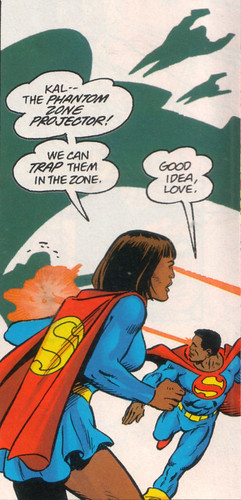 Superman and Supergirl
Superman and SupergirlReal name(s): Kal-El (also referred to as Clark) and Kara
Diversity factor: Black
Exclamation: Great Krypton!
Superman and Supergirl are Kryptonians and their position as heroes seems to be the same as on other Earths: the leaders of the pack. Kal and Kara both act as leaders of the JAA and display the same powers and fill the same role of "Big Blue" as elsewhere in the multiverse.
The "real" Superman seems to connect with them deeply.
It is stated explicitly several times in the dialogue that they are a married couple and not cousins. This exposition is almost unnecessary, since they are given to public displays of affection throughout the book.
Superman has a Fortress of Solitude (but in the Antarctic), which made me wonder is Supergirl had one of her own, too, since they are portrayed as equal partners. You might think Kara came to Earth after Kal, as on Earth-1, and he had already established the Fortress before he met her, but Kal at one point says "we came to Earth three years ago," and Kara talks about "one family" being saved when Krypton exploded and how they were married "ten years" prior, so it's clear they came to Earth together, as adults. Hmmm.
I seem to recall an old map of Krypton that showed an island where the black Kryptonians lived; the story was that Krypton had never had slavery, so the majority whites and the minority blacks had kept pretty much separate. I think this was DC's way of explaining why Krypton was all-white. The island was called Vulto or something like that; maybe that's where the House of El lived in this universe.
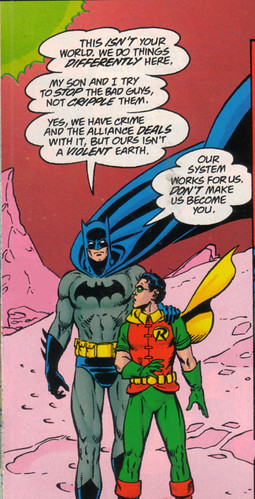 Batman and Robin
Batman and RobinReal names(s): Unknown and Dick (no last name)
Diversity factor: Still white
This Batman has the old-school bat-emblem; it is curious that although the grim-'n'-grittification of Batman has brought him back to this symbol, eight (or twenty-two) years ago it was the stern and angry Batman of Earth-1 who had the yellow oval, and the happier, family-man Batman of Earth-D (he calls Robin “chum”) in the plain bat.
This Batman is indeed a family man: it is not revealed whether he is Bruce Wayne, but Dick is his son, and he has a living wife and two other children as well. No psychotic loner here.
Also no outlaw. Batman tells Lady Quark that the Alliance heroes are “officers of the law, not vigilantes.” He recalls the fifties Batman more than anything.
Robin is full of wisecracks (but no “Holy Flypaper”-type remarks, thank goodness); he’s very much a young Robin Hood.
 Wonder Woman
Wonder WomanReal name: Di
Diversity factor: Middle-Eastern (At least, she’s colored that grayish-brown that comics seem to use for anyone with origins between the Levant and the Kush.)
Exclamation: Athena’s Wisdom!
Earth-D’s Wonder Woman sports the star-spangled spandex (with a skirt), flies an invisible jet, and has a golden lasso. She exudes that same formality, almost a stiffness, that many writers give the character. At the same time, in one exchange, Atom calls her "Di" and she calls him “Hon” – there’s no other indication of a relationship between them, but that does see awfully casual.
There are no references to Amazons or Amazon Island in the story; it’s hard to tell whether there’s a Middle-East connection in her backstory or if that change was made for it’s own sake.
 Aquaman
AquamanReal Name: Unknown
Diversity factor: Humanoid with pale skin, scaly ears, and gills
Exclamation: Neptune’s Trident!
Although he’s never called by name and looks very different, this Aquaman has a lot in common with Arthur Curry: he refers to himself as “King of the Sea,” controls fish (dolphins, actually), mentions Atlantis, and refers to his family.
On the other hand, he seems a little more casual and less distant than Aquaman has been presented lately (although admittedly that wasn’t always the case). Even with the gills, he doesn't have any problem breathing air.
 Flash
FlashReal name: Tanaka Rei
Diversity factor: Japanese
Exclamation: Mercury’s Wings!
We see a lot of Flash on Earth-D, since it is Barry Allen who is our hook into the story, and he connects with Tanaka in a typical comic-book coincidence. Tanaka knows Barry in the same way Barry knew Jay Garrick: he has comic books that feature the Flash of Earth-1 as a fictional character. Oh, the irony!
Tanaka is very much like Barry in that he seems to be a mainstream, middle-American, suburban family man. He even has a brush-top crew-cut like Barry used to. We meet his wife Hoshi and two children who go unnamed; a brother, Hank, is also mentioned. The Earth-D Flash operates in Central City and has a Mirror Master for a foe. His powers are exactly like Barry’s, except he’s never built a Cosmic Treadmill (maybe he missed that issue).
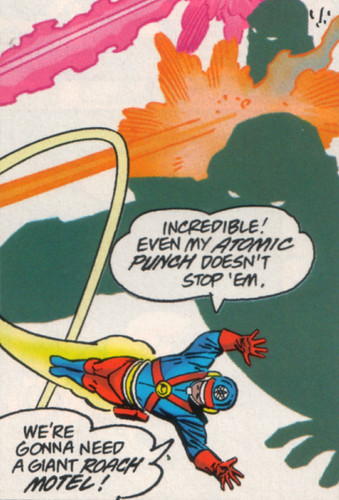 Atom
AtomReal name: Unknown
Diversity factor: Black
This Atom seems like a pint-sized Adam Strange more than anything else. He can fly, and although he refers to his “atomic punch,” he carries a kirbytech rifle later in the story. He is never seen without this helmet, but it’s clear that he has a mustache (which is about as unusual in costumed heroes as is racial diversity). We never see him shrink or grow, though.
 Green Lantern
Green LanternReal name: Jose Hernandez
Diversity factor: White Brazilian
The Green Lantern of Sector 5134 in the Earth-D universe has a short and glorious career. He gets his ring from Tagin Sur on page 36 and never makes it to page 49. In those few pages, he projects both power and humility, and is quite engaging.
Like Hal Jordan, he is a fighter pilot, but unlike Hal, he seeks out his injured predecessor (to offer help) instead of being summoned.
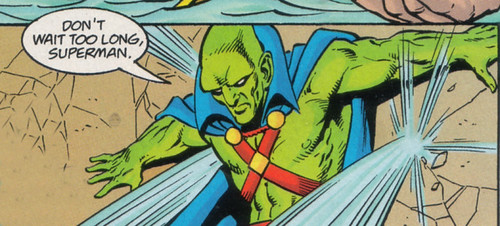
Martian ManhunterReal name: J’onn
Diversity factor: Still green
We don't get much on the Manhunter; in fact, no one calls him anything besides “J’onn,” so it's only a guess that he’s a Martian. He looks a lot like an early draft of the animated MM and less like the current “angry broccoli man” version. All he does is fly and be strong, so it's hard to say how much of an analogue he is other than visually.
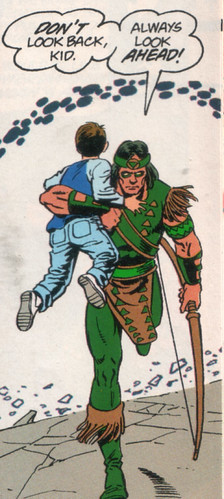 Green Arrow
Green ArrowReal name: Unknown
Diversity factor: First Peoples
In both look and attitude, the Earth-D GA seems more like Hawkeye from the Avengers than Oliver Queen. He spouts what Bully has called the “unsettling slang of Mr. Clint Barton” and appears to be the Alliance’s blue-collar guy. His arrows have specialty heads, but we never get to see them do anything more exotic than generically explode.
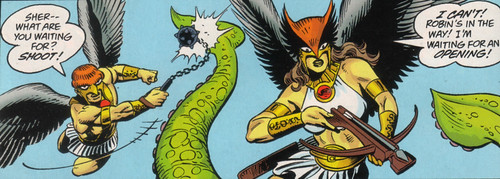 Hawkman and Hawkgirl
Hawkman and HawkgirlReal names: Kator and Shay (also called Sher)
Diversity factor: Unknown. (Both are colored a pale yellow, different from any other character, so your guess is as good as mine.)
Exclamation: Daxxon’s World!
This is another relationship-switch for a pair of heroes: Katar and Shay are brother and sister, not husband and wife. Withal, they are still most reminiscent of Joe Kubert’s take on the Silver-Age Earth-1 versions, ancient weapons and all. Their costumes emphasize more of an Egyptian motif, and two panels show Hawkgirl’s wings apparently growing from her back, so perhaps there are more differences than that, but we never find out.

JAA HeadquartersThe Alliance members meet in an undersea complex instead of a satellite, and I have to tell you, pneumatic tubes are almost as high a cool factor as airships when it comes to alternate worlds.
There they are – ripe for revival and ready for retconning, the Global Guardians with the “obvious” dial turned down just a hair, the Super-Friends played a little straighter -
the Justice Alliance of America.
Formalist note: If you notice something odd about the pictures, check out the word balloons. Throughout the comic, Earth-D characters speak in word balloons that are not quite as wavy as thought balloons, but definitely curvier than the standard oval dialog balloons which the Earth-1 characters use. The sustained effect is a little eerie.
Disclaimer: backgrounds of the clips may have been changed to make the panels a little more pinup-y.
